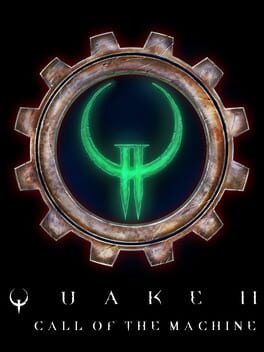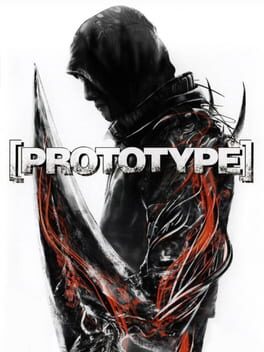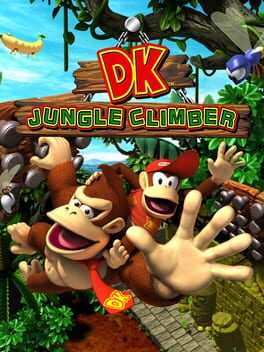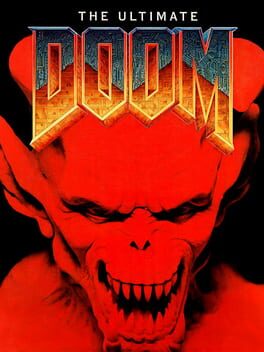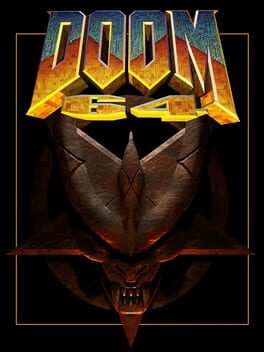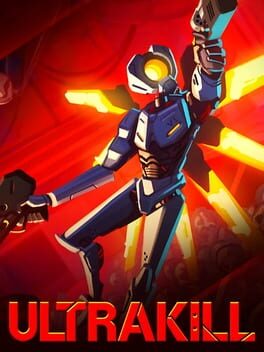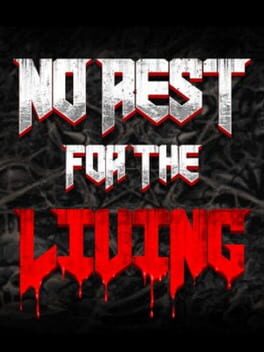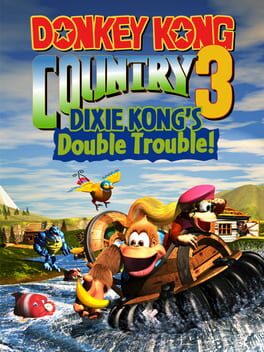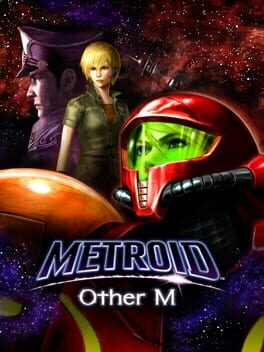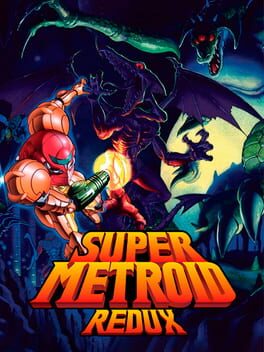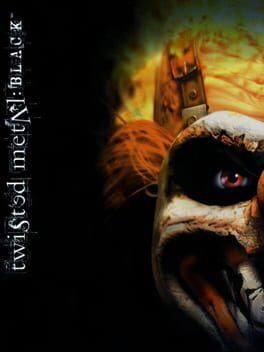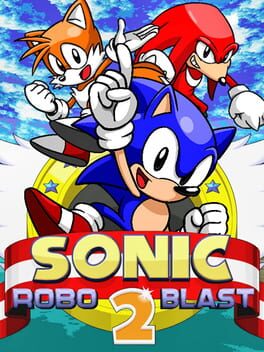mirphy
37 Reviews liked by mirphy
So much better than the vanilla Q2 campaign, thanks to all the years that have passed where players and designers both have come to understand the best ways to use monsters and design level geometry around them. Feels like a Quake mapping jam / Doom community project, there's a solid variety of map types and I was particularly happy to see more than one map with slaughter DNA very upfront. Would recommend Operation Corpse Run in particular if you're not sure that you want to spend time playing the full thing yet - Really impressed me with its aggressive action.
Prototype
2009
Here's a million awesome cool powers - now have fun, as every single enemy is completely resistant to every single one of them, and the only method of completing the unfun, awfully designed story missions is by driving a floaty-ass tank at all times, which is EXACTLY what people want from a SUPERHERO game.....
Prototype is a fucking mess of broken controls, a poor framerate (as far as PS3 goes), an unintelligible story with horribly directed cutscenes and exquisitely terrible voice acting, and very little to actually have fun with your powers.
For reference, my positive points are entirely attributed to the fun that can come from messing around in the open world - hurling cars, cutting zombies in two, blowing up buildings (with graphics that make them look like those exploding model buildings from Power Rangers and Ultraman), it does feel good.
Unfortunately, actually playing the story or side content becomes an increasing excerise in frustration - by the midpoint of the story, engaging the military in any way instantly throws 3-5 helicopters on you, all spamming nigh-undodgeable heat seeking missiles that stunlock you and kill you in mere seconds. For a game about having superpowers, it goes out of it's way to make you feel as powerless as possible.
The over-the-top edgy presentation makes things impossible to take seriously unless you're 13 years old, and plot points come and go with only the occasional resolution to them - rarely one that's satisfactory.
Altogether, this game is kind of a piece of shit, with incredibly horrible game design when it comes down to actually playing it. But, all that aside, the sandbox gameplay is honestly kind of fun for the time period.
Prototype is a fucking mess of broken controls, a poor framerate (as far as PS3 goes), an unintelligible story with horribly directed cutscenes and exquisitely terrible voice acting, and very little to actually have fun with your powers.
For reference, my positive points are entirely attributed to the fun that can come from messing around in the open world - hurling cars, cutting zombies in two, blowing up buildings (with graphics that make them look like those exploding model buildings from Power Rangers and Ultraman), it does feel good.
Unfortunately, actually playing the story or side content becomes an increasing excerise in frustration - by the midpoint of the story, engaging the military in any way instantly throws 3-5 helicopters on you, all spamming nigh-undodgeable heat seeking missiles that stunlock you and kill you in mere seconds. For a game about having superpowers, it goes out of it's way to make you feel as powerless as possible.
The over-the-top edgy presentation makes things impossible to take seriously unless you're 13 years old, and plot points come and go with only the occasional resolution to them - rarely one that's satisfactory.
Altogether, this game is kind of a piece of shit, with incredibly horrible game design when it comes down to actually playing it. But, all that aside, the sandbox gameplay is honestly kind of fun for the time period.
DK: Jungle Climber
2007
Another one of Nintendo’s obscurities.
Donkey Kong: Jungle Climber is rightfully in Donkey Kong Country’s shadow. However, this game is not to be underestimated. While it’s not even close to be a masterpiece, it still manages to surprise with fresh ideas and introduce new mechanics in almost every single level. Its level design is fair at all times and challenging to complete.
Donkey Kong: Jungle Climber is rightfully in Donkey Kong Country’s shadow. However, this game is not to be underestimated. While it’s not even close to be a masterpiece, it still manages to surprise with fresh ideas and introduce new mechanics in almost every single level. Its level design is fair at all times and challenging to complete.
The Ultimate Doom
1995
Doom 64
1997
Verticality is mostly always seen as indication of good and creative level design in the video game sphere - this is especially true for platformers for which I can see the case being made but I do think that holding this as some sort of universal fact limits creativity and can make everything feel the same; when all the designers are striking for the same goal of verticality it can all start feeling ridiculous.
I wouldn't say verticality always conducts to good level design. Point in case is the DOOM franchise, where my favorite official maps to date are still those designed by John Romero for Episode 1 (1993) which do have this element but it's restrained to the point of working well with the nuances of classic DOOM gameplay or even Sandy Petersen's Mt. Erebus where most of the enemy encounters happen in a horizontal fashion.
When this element gets out of hand you get things like Industrial Zone for Doom II which I appreciate for existing for being so ridiculous, having enemies on top of skyscrapers shooting at you and then having to jump off buildings to reach the bit of land where you need to go is interesting but it's not fun on the whole - all of this in a game where you cannot look up or down.
On this same line of thought, corridor and maze-like levels in first-person shooters are often seen as something boring and indicative of bad design but I especially don't agree with this at all.
DOOM 64 had to work with the limitations of the N64 which is partly the reason that there's an emphasis on back-tracking, compact level design (which conduct to what people call corridor-like/maze-like) and even absense of verticality.
Instead of a "DOOM lite" coming out of these limitations, the developers justified these elements by giving DOOM 64 an atmospheric and survival horror spin. Whereas 1993 and DOOM II are a gamer fantasy of being an overpowered macho marine listening to heavy metal and blasting through hordes of demons (okay maybe DOOM II on UV not so much); 64 exists to oppress you, scare you and make you realize you had claustrophobia all along and need a big open space to breath some fresh air.
The soundtrack was changed from renditions of heavy metal classics to oppressive atmospheric sounds. Deciding not to go with these dopamine-inducing tracks was a great choice thematically for 64, it does play with the theme of you being somewhere you don't really belong. Just have a listen to Final Outpost for example
I love the art design for 64: the darker color palette, the environments, the weapons and enemy re-design were all done incredibly well. My favorite redesigns probably being the Imp and the Pain Elemental, Nightmare Imps are also a really cool new addition.
Difficulty is also really important for me, I usually enjoy challenging things. I would say the hardest difficulty level of 64 (Watch Me Die!) sits somewhere in between DOOM II's UV and 1993's UV (closer to the latter) so I was not disappointed in this regard. I did play Sunlust on UV (cbt) before this so my concept of difficulty might be a little distorted.
The only reason I'm not giving this 5 stars is because I did feel the levels had some predictability to them, maybe a byproduct of me already having beaten 1993, DOOM II and Sunlust so it's harder to surprise me. I still miss that feeling of wonder and surprise that 1993 gave me though so that one is still my favorite.
I wouldn't say verticality always conducts to good level design. Point in case is the DOOM franchise, where my favorite official maps to date are still those designed by John Romero for Episode 1 (1993) which do have this element but it's restrained to the point of working well with the nuances of classic DOOM gameplay or even Sandy Petersen's Mt. Erebus where most of the enemy encounters happen in a horizontal fashion.
When this element gets out of hand you get things like Industrial Zone for Doom II which I appreciate for existing for being so ridiculous, having enemies on top of skyscrapers shooting at you and then having to jump off buildings to reach the bit of land where you need to go is interesting but it's not fun on the whole - all of this in a game where you cannot look up or down.
On this same line of thought, corridor and maze-like levels in first-person shooters are often seen as something boring and indicative of bad design but I especially don't agree with this at all.
DOOM 64 had to work with the limitations of the N64 which is partly the reason that there's an emphasis on back-tracking, compact level design (which conduct to what people call corridor-like/maze-like) and even absense of verticality.
Instead of a "DOOM lite" coming out of these limitations, the developers justified these elements by giving DOOM 64 an atmospheric and survival horror spin. Whereas 1993 and DOOM II are a gamer fantasy of being an overpowered macho marine listening to heavy metal and blasting through hordes of demons (okay maybe DOOM II on UV not so much); 64 exists to oppress you, scare you and make you realize you had claustrophobia all along and need a big open space to breath some fresh air.
The soundtrack was changed from renditions of heavy metal classics to oppressive atmospheric sounds. Deciding not to go with these dopamine-inducing tracks was a great choice thematically for 64, it does play with the theme of you being somewhere you don't really belong. Just have a listen to Final Outpost for example
I love the art design for 64: the darker color palette, the environments, the weapons and enemy re-design were all done incredibly well. My favorite redesigns probably being the Imp and the Pain Elemental, Nightmare Imps are also a really cool new addition.
Difficulty is also really important for me, I usually enjoy challenging things. I would say the hardest difficulty level of 64 (Watch Me Die!) sits somewhere in between DOOM II's UV and 1993's UV (closer to the latter) so I was not disappointed in this regard. I did play Sunlust on UV (cbt) before this so my concept of difficulty might be a little distorted.
The only reason I'm not giving this 5 stars is because I did feel the levels had some predictability to them, maybe a byproduct of me already having beaten 1993, DOOM II and Sunlust so it's harder to surprise me. I still miss that feeling of wonder and surprise that 1993 gave me though so that one is still my favorite.
Ultrakill
2020
Ultrakill
2020
Metroid: Other M
2010
There seems to be a bit of revisionist history going on around Nintendo fanbase saying that Other M may have terrible story, its gameplay was solid.
It was not.
For a game to properly function, one of the most important thing is to have control scheme that actually works well. A game becomes an interactive medium through that control interface. That is the fundamental basis of all video games. Depending on what kind of a game it is and how fast-paced it is, one game can have be more lenient than others in terms of overall control design and responsiveness, but it is never right to have a bad control scheme. And bad control scheme always, always makes a game worse than it should be.
Metroid: Other M is a game with a god-awful control scheme. It simply does not work. A slower, more meditative game would be annoying to have a core gameplay mechanic where the way one holds the controller constantly changes; in a fast-paced action game, it is a sin. Almost every single boss battle forces the player to use missiles, which can only be shot when they are in first-person mode by holding the Wiimote up and pointing at the screen. Even then, it is a hassle to actually lock-on to the target, since for some bloody reason lock-on button and the "move screen around" button are both assigned to B, which honestly is two very conflicting things to begin with. Obviously, Samus cannot move when aiming in first-person, but for some reason, the enemies outside of her view are happy to attack her out of nowhere--something they didn't even allow in Metroid Prime, a game that's entirely in first-person and lets Samus move while aiming.
For reasons unknown, the game's only way of controlling is with Wiimote only--no nunchuck, no classic controller, just a single Wiimote. That means there are only two buttons for fast-paced action outside of the d-pad and the A button which is awkwardly placed to be readily used (it's used to change into Morph Ball). That means Other M, despite being a full 3D action-adventure game with multiple techniques, is controlled with less buttons than the GBA Metroid games. It is frankly absurd how terribly controlled this game is. Samus' movement is done through d-pad. In a 3D environment. There is no dedicated dodge button, the player can just tap the d-pad, and it has hilariously lenient window that they can spam it--until something offscreen randomly attacks Samus. Or even worse, they can attack when Samus is in concentration mode or aiming mode, at which point the player has to waggle the controller, which may or may not register despite the window for dodging is clearly designed with only button press in mind. It just does not feel good to play as an action game when its mechanics are chained by a controller that frankly does not have the capacity to be used for something like this. I don't say this because I hate motion-controls--I do like it when it's done well. I play Splatoon with motion controls. I love aiming with gyro on 3DS games. I play VR games. But Other M just has a poor, terribly thought-out motion control design, on top of fundamentally flawed scheme.
It's redundant to talk about how terrible Other M's story is, even outside of how they killed Samus' character and made some very problematic decisions in portraying her. But I want to talk about how the story is so bad that it actually makes gameplay worse. There are so many times where game places arbitrary restrictions on Samus by Adam not authorizing her to use certain weapons she already has. This becomes problematic in a level-design sense because it forces painfully needless backtracking in a game that is already bafflingly linear. Samus comes to an obstacle that is clearly possible to overcome with a weapon that has not yet been authorized, so only way is to go back, at which point Adam finally gives the green light to use the said weapon. The player is directed from one place to the next with no real exploation, not even in a contained sense like Fusion, at which point revisiting old places just become a chore. Fusion made linearity in story and level design into its strength; Other M is made linear for no reason at all.
Here is one specific example of how the game's awful narrative actually makes a bad boss battle even worse. Despite shoving down the whole "authorization" narrative gimmick into player's throat throughout the entire game, the game subverts the expectation by making the player to beat the penultimate boss of the main game (which also happens to be the most frustrating one) with a weapon that has been locked for the entire game until thus far--without telling them it has been unlocked. It is the only way to beat the boss, and not using it will literally kill Samus within seconds. Again, the game does not tell the player (as in, there is no authorization!) that that the said weapon is unlocked. The one time they actually need that confirmation, it's not there. There is no button prompt, no alarm message, no cutscene, nothing. The player just has to remember that they had it because it is one of the things they learn in the tutorial in the very beginning of the game, even though the game locks the player from using it right after, until the very last moment of that penultimate boss fight. The bad narrative device stabs the player in the back one last time.
There are games that are bad because the developers clearly did not have the talent or the passion. Then there are games that are bad because the ambition was too high and they simply did not have to resources to make it properly. Then there are these rare cases where they clearly have the resources, the passion and the talent with achievable ambitions, but they just make incomprensibly bad decisions over and over again. Metroid: Other M is that kind of a game. This is a game chock-full of baffling design decisions that somehow makes even less sense than its universally-hated narrative. That is saying something.
It was not.
For a game to properly function, one of the most important thing is to have control scheme that actually works well. A game becomes an interactive medium through that control interface. That is the fundamental basis of all video games. Depending on what kind of a game it is and how fast-paced it is, one game can have be more lenient than others in terms of overall control design and responsiveness, but it is never right to have a bad control scheme. And bad control scheme always, always makes a game worse than it should be.
Metroid: Other M is a game with a god-awful control scheme. It simply does not work. A slower, more meditative game would be annoying to have a core gameplay mechanic where the way one holds the controller constantly changes; in a fast-paced action game, it is a sin. Almost every single boss battle forces the player to use missiles, which can only be shot when they are in first-person mode by holding the Wiimote up and pointing at the screen. Even then, it is a hassle to actually lock-on to the target, since for some bloody reason lock-on button and the "move screen around" button are both assigned to B, which honestly is two very conflicting things to begin with. Obviously, Samus cannot move when aiming in first-person, but for some reason, the enemies outside of her view are happy to attack her out of nowhere--something they didn't even allow in Metroid Prime, a game that's entirely in first-person and lets Samus move while aiming.
For reasons unknown, the game's only way of controlling is with Wiimote only--no nunchuck, no classic controller, just a single Wiimote. That means there are only two buttons for fast-paced action outside of the d-pad and the A button which is awkwardly placed to be readily used (it's used to change into Morph Ball). That means Other M, despite being a full 3D action-adventure game with multiple techniques, is controlled with less buttons than the GBA Metroid games. It is frankly absurd how terribly controlled this game is. Samus' movement is done through d-pad. In a 3D environment. There is no dedicated dodge button, the player can just tap the d-pad, and it has hilariously lenient window that they can spam it--until something offscreen randomly attacks Samus. Or even worse, they can attack when Samus is in concentration mode or aiming mode, at which point the player has to waggle the controller, which may or may not register despite the window for dodging is clearly designed with only button press in mind. It just does not feel good to play as an action game when its mechanics are chained by a controller that frankly does not have the capacity to be used for something like this. I don't say this because I hate motion-controls--I do like it when it's done well. I play Splatoon with motion controls. I love aiming with gyro on 3DS games. I play VR games. But Other M just has a poor, terribly thought-out motion control design, on top of fundamentally flawed scheme.
It's redundant to talk about how terrible Other M's story is, even outside of how they killed Samus' character and made some very problematic decisions in portraying her. But I want to talk about how the story is so bad that it actually makes gameplay worse. There are so many times where game places arbitrary restrictions on Samus by Adam not authorizing her to use certain weapons she already has. This becomes problematic in a level-design sense because it forces painfully needless backtracking in a game that is already bafflingly linear. Samus comes to an obstacle that is clearly possible to overcome with a weapon that has not yet been authorized, so only way is to go back, at which point Adam finally gives the green light to use the said weapon. The player is directed from one place to the next with no real exploation, not even in a contained sense like Fusion, at which point revisiting old places just become a chore. Fusion made linearity in story and level design into its strength; Other M is made linear for no reason at all.
Here is one specific example of how the game's awful narrative actually makes a bad boss battle even worse. Despite shoving down the whole "authorization" narrative gimmick into player's throat throughout the entire game, the game subverts the expectation by making the player to beat the penultimate boss of the main game (which also happens to be the most frustrating one) with a weapon that has been locked for the entire game until thus far--without telling them it has been unlocked. It is the only way to beat the boss, and not using it will literally kill Samus within seconds. Again, the game does not tell the player (as in, there is no authorization!) that that the said weapon is unlocked. The one time they actually need that confirmation, it's not there. There is no button prompt, no alarm message, no cutscene, nothing. The player just has to remember that they had it because it is one of the things they learn in the tutorial in the very beginning of the game, even though the game locks the player from using it right after, until the very last moment of that penultimate boss fight. The bad narrative device stabs the player in the back one last time.
There are games that are bad because the developers clearly did not have the talent or the passion. Then there are games that are bad because the ambition was too high and they simply did not have to resources to make it properly. Then there are these rare cases where they clearly have the resources, the passion and the talent with achievable ambitions, but they just make incomprensibly bad decisions over and over again. Metroid: Other M is that kind of a game. This is a game chock-full of baffling design decisions that somehow makes even less sense than its universally-hated narrative. That is saying something.
Super Metroid: Redux
2021
Super Metroid is already a 10/10, and then this comes along and deals with those little issues you might nitpick. I love getting absorbed in this alien world, all alone with nothing but what I can gather. The music here is perfect for establishing that feeling. I can sit in my dark room, turn off my phone, and just feel the isolation. I had never gotten the best ending before, but one day I came close, decided to try again with the Redux patch, and I pulled it off.
